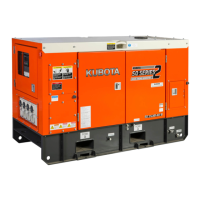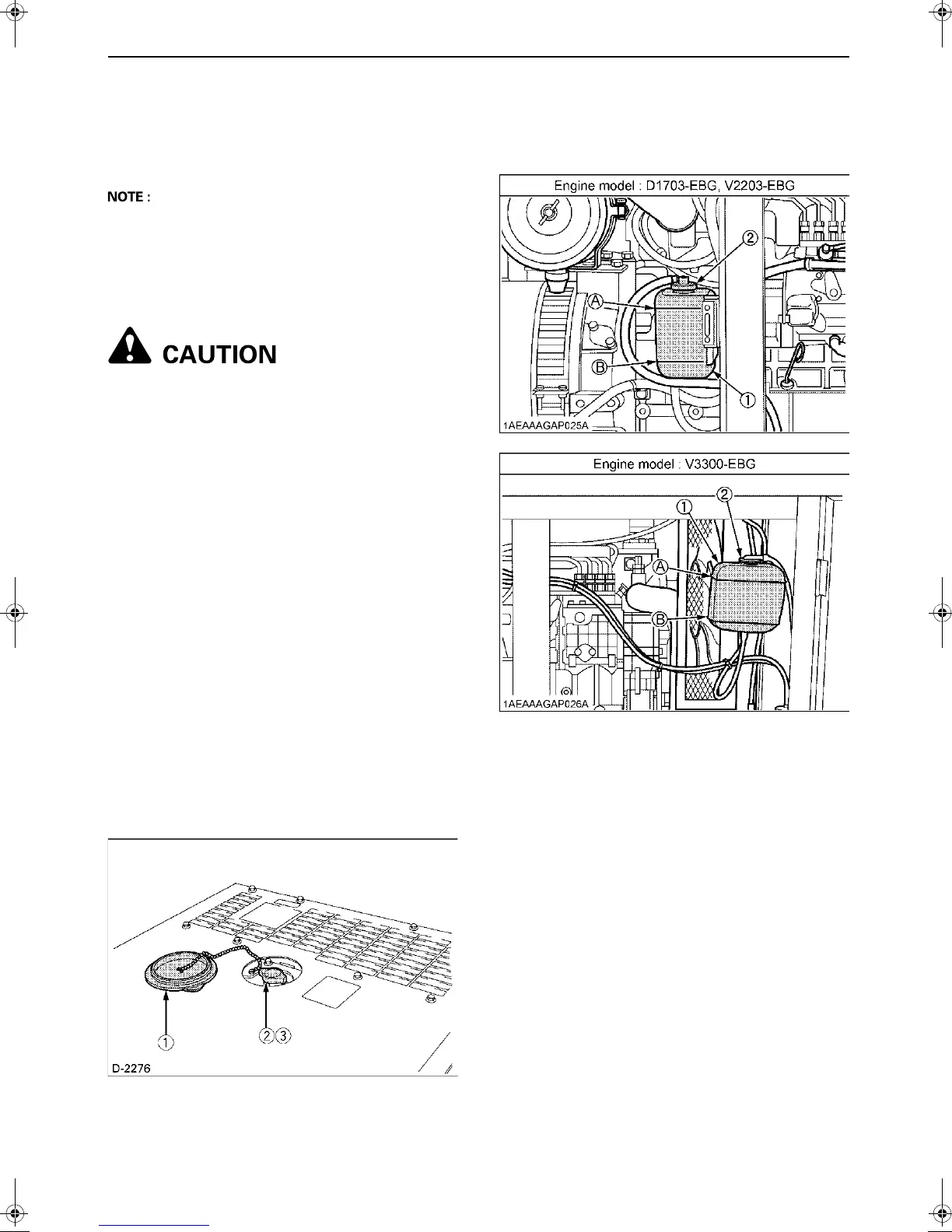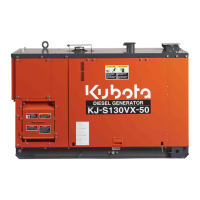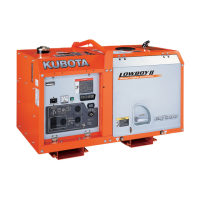PERIODIC SERVICE28
5. After the new cartridge has been replaced, the engine
oil level normally decreases a little. Therefore run the
engine for a while and check for oil leaks through the
seal before checking the engine oil level. Add oil if
necessary.
A Completely wipe off any oil sticking to the machine in
the filter area.
RADIATOR
Make it a rule to check the coolant level before every
operation.
To avoid personal injury:
A DO NOT stop the engine suddenly,
stop it after about 5 minutes of
unloaded idling.
A Work only after letting the engine and
radiator cool off completely (more
than 30 minutes after it has been
stopped).
A DO NOT remove the radiator cap
while coolant is hot. When cool,
rotate cap slowly to the first stop to
allow excess pressure to escape.
Then remove cap completely.
If overheating should occur, steam
gushes out from the radiator or
recovery tank; Allow the engine to
cool before attempting to open the
cap. Severe burns could result.
BChecking Coolant Level, Adding Coolant
1. Remove the radiator cap after the engine has
completely cooled, and check to see that coolant
reaches the supply port.
2. If the radiator is provided with a recovery tank, check
the coolant level of the recovery tank. When it is
between the "FULL" and "LOW" marks, the coolant
will usually last for one day’s work.
3. When the coolant level drops due to evaporation, add
only coolant up to the full level.
(1) Radiator top cover
(2) Radiator cap
(3) Coolant filling port
(1) Recovery tank
(2) Cap
(A) "FULL"
Upper line 1.1 L
(B) "LOW"
1G296-8914.book 28 ページ 2012年3月19日 月曜日 午前10時40分





